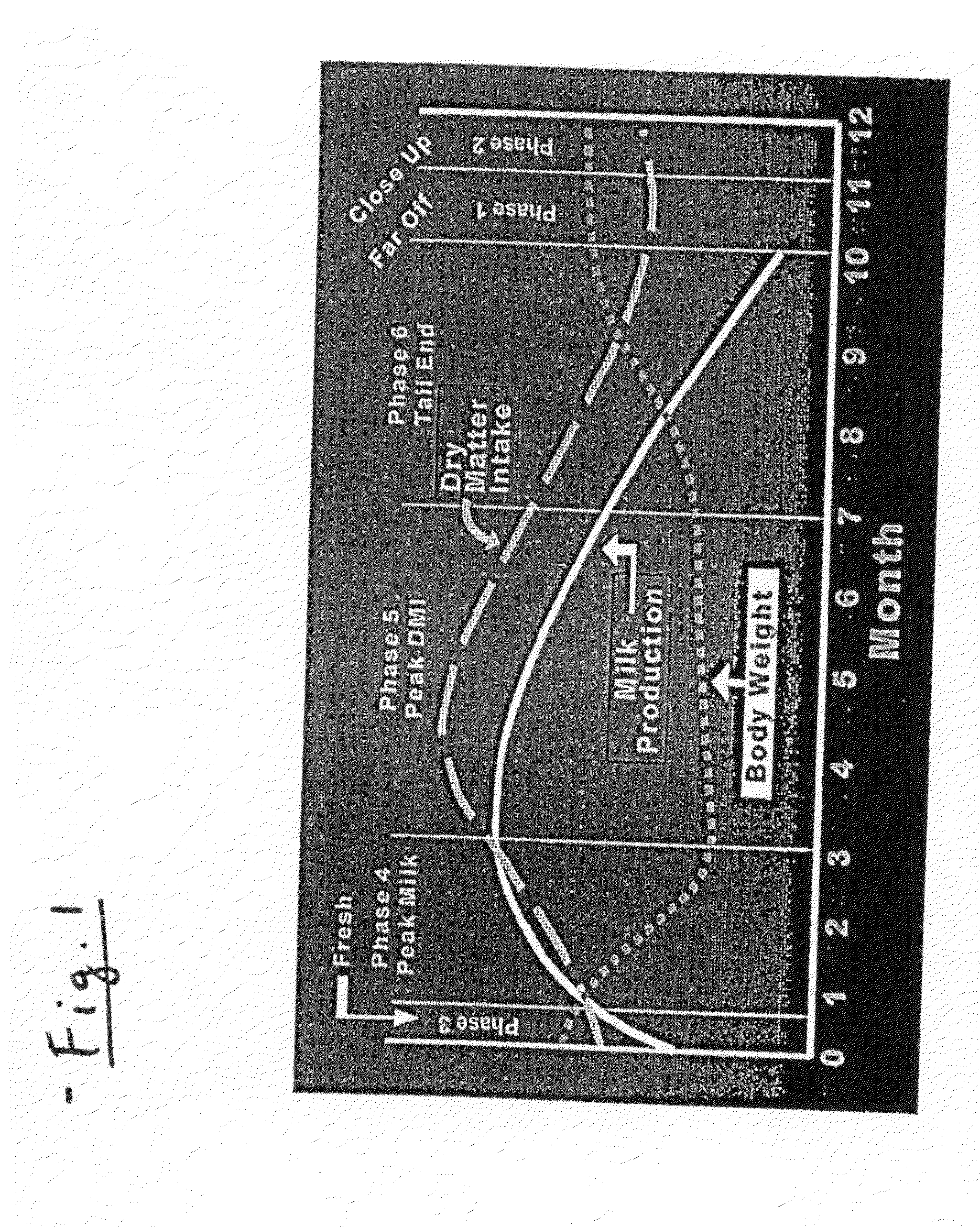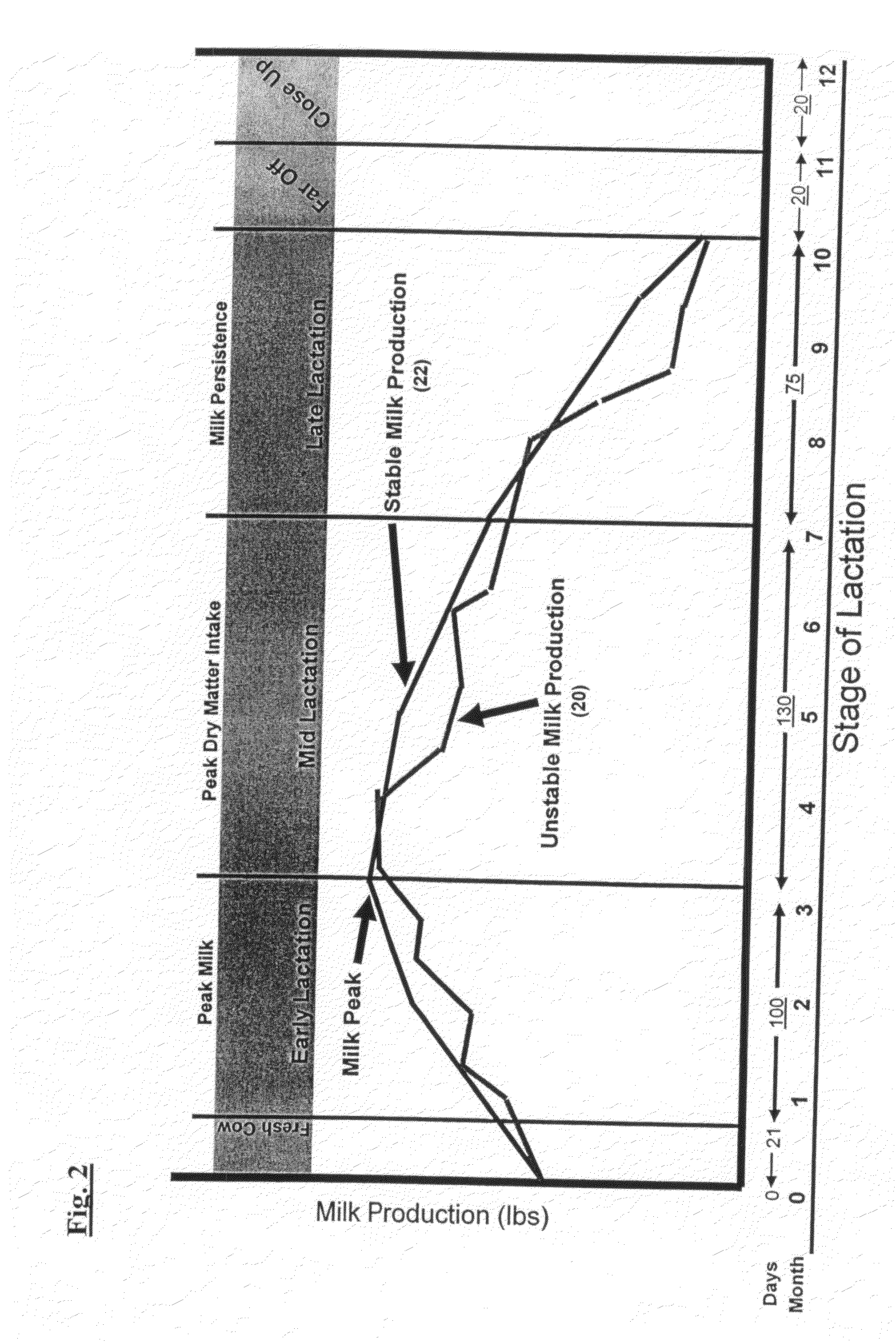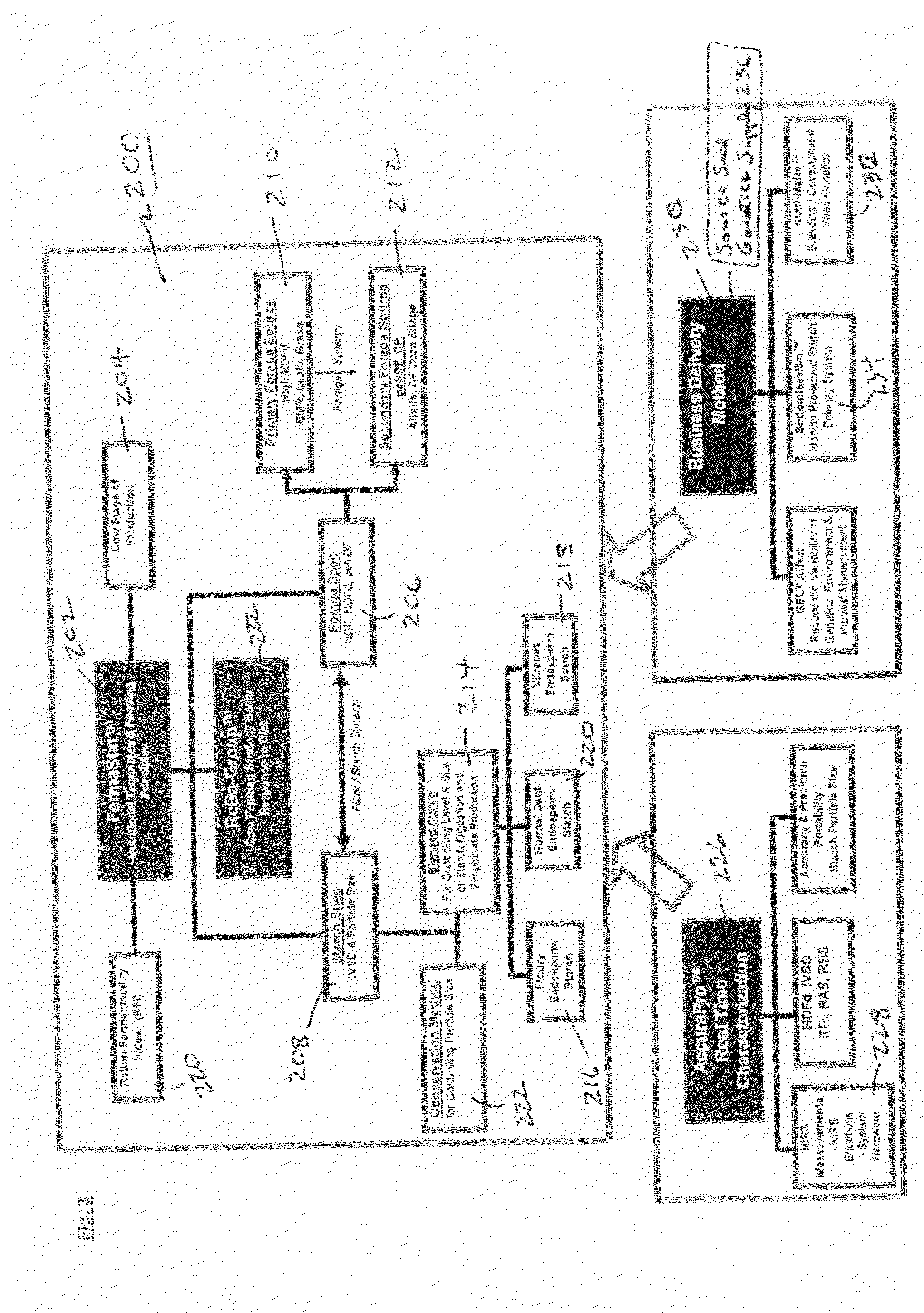Method and feed for enhancing ruminant animal nutrition
a technology for ruminant animals and feed, applied in the field of ruminant animal nutrition, can solve the problems of reducing the buffering capacity, the rumen feed passage rate is too high, and the total diet is too high, so as to improve the milk production stability, refine the level and site of propionic acid production, and optimize the ruminal environment inside the cow
- Summary
- Abstract
- Description
- Claims
- Application Information
AI Technical Summary
Benefits of technology
Problems solved by technology
Method used
Image
Examples
Embodiment Construction
[0041]An integrated method for providing optimized nutrition to ruminant animals is provided by the invention. Such method combines the knowledge of feed programming and dairy cow rumen function with the digestibility characteristics of forage and grains to build ration templates for specific stages of production of dairy cows. This invention provides a system that incorporates at least two specific forage sources and ration forage specifications to build the synergistic base forage diet to which a blended starch grain is then added to influence the quantity of the production of propionate VFA and the site of its absorption within the cow's gastrointestinal tract. This targeted digestibility of starch is controlled and regulated by characterizing the rate and extent of digestibility of the corn genetic source (grain) and the conservation of this starch by specific particle size by processing. A blend of these sources of grain starch and specific particle size is created to achieve t...
PUM
 Login to View More
Login to View More Abstract
Description
Claims
Application Information
 Login to View More
Login to View More - R&D
- Intellectual Property
- Life Sciences
- Materials
- Tech Scout
- Unparalleled Data Quality
- Higher Quality Content
- 60% Fewer Hallucinations
Browse by: Latest US Patents, China's latest patents, Technical Efficacy Thesaurus, Application Domain, Technology Topic, Popular Technical Reports.
© 2025 PatSnap. All rights reserved.Legal|Privacy policy|Modern Slavery Act Transparency Statement|Sitemap|About US| Contact US: help@patsnap.com



